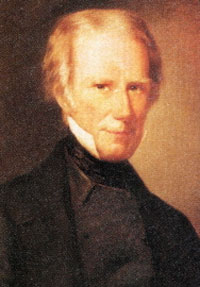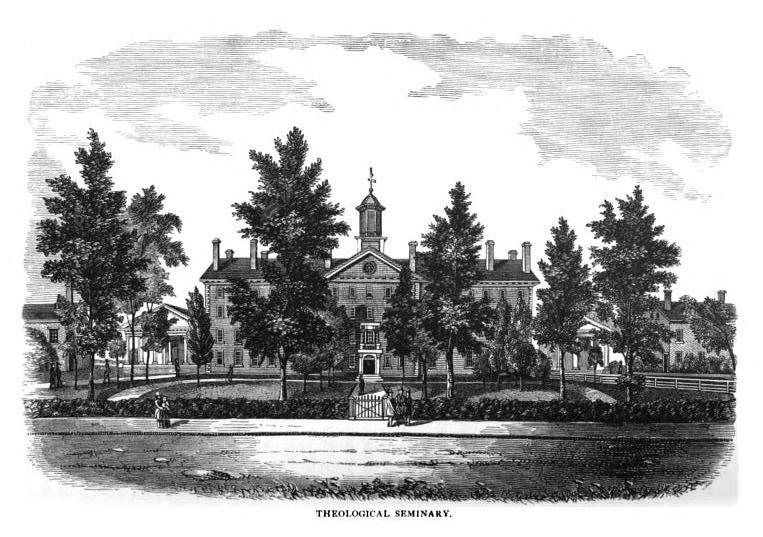|
John Finley Crowe
John Finley Crowe (June 16, 1787 - January 17, 1860) was a Presbyterian minister and the founder of Hanover College in Hanover, Indiana.Baker, Frank. ''Glimpses of Hanover's Past''. Seymour, IN: Graessle-Mercer Co. (1978) 22-30. His residence from 1824 to 1860, the Crowe-Garritt House, was listed on the National Register of Historic Places The National Register of Historic Places (NRHP) is the United States federal government's official list of districts, sites, buildings, structures and objects deemed worthy of preservation for their historical significance or "great artistic v ... in 1980. ''Note:'' This includes and Accompanying photographs. References {{DEFAULTSORT:Crowe, John Finley Hanover College People from Jefferson County, Indiana 1787 births 1860 deaths ... [...More Info...] [...Related Items...] OR: [Wikipedia] [Google] [Baidu] |
American Frontier
The American frontier, also known as the Old West or the Wild West, encompasses the geography, history, folklore, and culture associated with the forward wave of United States territorial acquisitions, American expansion in mainland North America that began with European colonization of the Americas, European colonial settlements in the early 17th century and ended with the admission of the last few western territories as states in 1912 (except Alaska, which was not Alaska Statehood Act, admitted into the Union until 1959). This era of massive migration and settlement was particularly encouraged by President Thomas Jefferson following the Louisiana Purchase, giving rise to the Expansionism, expansionist attitude known as "Manifest destiny, Manifest Destiny" and the historians' "Frontier thesis, Frontier Thesis". The legends, historical events and folklore of the American frontier have embedded themselves into United States culture so much so that the Old West, and the Western ge ... [...More Info...] [...Related Items...] OR: [Wikipedia] [Google] [Baidu] |
Greene County, Tennessee
Greene County is a county located on the eastern border of the U.S. state of Tennessee. As of the 2020 census, the population was 70,152. Its county seat is Greeneville. Greene County comprises the Greeneville, TN Micropolitan Statistical Area. History Greene County developed from the "Nolichucky settlement," established by pioneer Jacob Brown on land leased in the early 1770s from the Cherokee people. The Nolichucky settlement was aligned with the Watauga settlement, centered in modern Elizabethton. After the United States became independent, Greene County was formed in 1783 from the original Washington County, North Carolina, part of the former Washington District. The county is named for Major General Nathanael Greene (1742-1786), a major general in the Continental Army from Rhode Island. John Crockett, father of Davy Crockett, and his wife settled in the county near Limestone. Davy Crockett was born there in 1786. At the time, the area was part of the extra-legal sta ... [...More Info...] [...Related Items...] OR: [Wikipedia] [Google] [Baidu] |
Hanover, Indiana
Hanover is a town in Hanover Township, Jefferson County, southeast Indiana, along the Ohio River. The population was 3,546 at the 2010 census. Hanover is the home of Hanover College, a small Presbyterian liberal arts college. The "Point," located on the campus of Hanover College, is the only place along the Ohio River that three bends of the river can be viewed at once. The tallest waterfall in Indiana, Fremont Falls, is located in Hanover. Southwestern High School is the public school. History Logan's Point During the late eighteenth century, the area today known as the state of Indiana was a part of the Northwest Territory in the new United States. This large area west of the Appalachians and north of the Ohio River had been ceded by Great Britain after the Revolutionary War. It consisted of the area later organized as the states of Ohio, Indiana, Michigan, Illinois, Wisconsin, and parts of Minnesota. At that time, there were few European settlements on the northern ba ... [...More Info...] [...Related Items...] OR: [Wikipedia] [Google] [Baidu] |
Presbyterian
Presbyterianism is a part of the Reformed tradition within Protestantism that broke from the Roman Catholic Church in Scotland by John Knox, who was a priest at St. Giles Cathedral (Church of Scotland). Presbyterian churches derive their name from the presbyterian polity, presbyterian form of ecclesiastical polity, church government by representative assemblies of Presbyterian elder, elders. Many Reformed churches are organised this way, but the word ''Presbyterian'', when capitalized, is often applied to churches that trace their roots to the Church of Scotland or to English Dissenters, English Dissenter groups that formed during the English Civil War. Presbyterian theology typically emphasizes the sovereignty of God, the Sola scriptura, authority of the Scriptures, and the necessity of Grace in Christianity, grace through Faith in Christianity, faith in Christ. Presbyterian church government was ensured in Scotland by the Acts of Union 1707, Acts of Union in 1707, which cre ... [...More Info...] [...Related Items...] OR: [Wikipedia] [Google] [Baidu] |
Transylvania College
Transylvania University is a private university in Lexington, Kentucky. It was founded in 1780 and was the first university in Kentucky. It offers 46 major programs, as well as dual-degree engineering programs, and is accredited by the Southern Association of Colleges and Schools. Its medical program graduated 8,000 physicians by 1859.John, Jr. Wright, ed. ''Transylvania: Tutor to the West'' (2nd ed. 1980) Transylvania's name, meaning "across the woods" in Latin, stems from the university's founding in the heavily forested region of western Virginia known as the Transylvania Colony, which existed briefly between 1775 and 1776 in south and western Kentucky. Transylvania is the alma mater of two U.S. vice presidents, two U.S. Supreme Court justices, 50 U.S. senators, 101 U.S. representatives, 36 U.S. governors, 34 U.S. ambassadors, and the Confederate president, making it a large producer of U.S. statesmen. History Transylvania was the first college west of the Allegheny ... [...More Info...] [...Related Items...] OR: [Wikipedia] [Google] [Baidu] |
Princeton Theological Seminary
Princeton Theological Seminary (PTSem), officially The Theological Seminary of the Presbyterian Church, is a private school of theology in Princeton, New Jersey. Founded in 1812 under the auspices of Archibald Alexander, the General Assembly of the Presbyterian Church (USA), and the College of New Jersey (now Princeton University), it is the second-oldest seminary in the United States. It is also the largest of ten seminaries associated with the Presbyterian Church. Princeton Seminary has long been influential in theological studies, with many leading biblical scholars, theologians, and clergy among its faculty and alumni. In addition, it operates one of the largest theological libraries in the world and maintains a number of special collections, including the Karl Barth Research Collection in the Center for Barth Studies. The seminary also manages an endowment of $1.13 billion, making it the third-wealthiest institution of higher learning in the state of New Jersey—after ... [...More Info...] [...Related Items...] OR: [Wikipedia] [Google] [Baidu] |
Hanover College
Hanover College is a private college in Hanover, Indiana, affiliated with the Presbyterian Church (USA). Founded in 1827 by Reverend John Finley Crowe, it is Indiana's oldest private college. The Hanover athletic teams participate in the Heartland Collegiate Athletic Conference. Hanover alumni are known as Hanoverians. History Founding In the early 19th century, missionaries went to Hanover as part of the Second Great Awakening. Crowe served as pastor of the Hanover Presbyterian Church. He opened the Hanover Academy on January 1, 1827, in a small log cabin near his home. Two years later, the state of Indiana granted the Academy a charter. On November 9, 1829, the Academy's Board of Trustees accepted the Presbyterian Synod of Indiana's proposal to adopt the school, provided a theological department was established. A two-story brick building was constructed to house both the Academy and the new Indiana Seminary. The state of Indiana issued the Academy a new charter, creati ... [...More Info...] [...Related Items...] OR: [Wikipedia] [Google] [Baidu] |
Crowe-Garritt House
Crowe-Garritt House is a historic home located at Hanover, Jefferson County, Indiana. The original section was built about 1824, with later additions and modifications. It is a two-story, rectangular wood-frame vernacular dwelling with a two-story verandah. The house was the residence of John Finley Crowe, founder of Hanover College from 1824 to 1860. ''Note:'' This includes and Accompanying photographs. It was listed on the National Register of Historic Places The National Register of Historic Places (NRHP) is the United States federal government's official list of districts, sites, buildings, structures and objects deemed worthy of preservation for their historical significance or "great artistic v ... in 1980. References Houses on the National Register of Historic Places in Indiana Houses completed in 1824 Houses in Jefferson County, Indiana National Register of Historic Places in Jefferson County, Indiana {{JeffersonCountyIN-NRHP-stub ... [...More Info...] [...Related Items...] OR: [Wikipedia] [Google] [Baidu] |
National Register Of Historic Places
The National Register of Historic Places (NRHP) is the United States federal government's official list of districts, sites, buildings, structures and objects deemed worthy of preservation for their historical significance or "great artistic value". A property listed in the National Register, or located within a National Register Historic District, may qualify for tax incentives derived from the total value of expenses incurred in preserving the property. The passage of the National Historic Preservation Act (NHPA) in 1966 established the National Register and the process for adding properties to it. Of the more than one and a half million properties on the National Register, 95,000 are listed individually. The remainder are contributing resources within historic districts. For most of its history, the National Register has been administered by the National Park Service (NPS), an agency within the U.S. Department of the Interior. Its goals are to help property owners and inte ... [...More Info...] [...Related Items...] OR: [Wikipedia] [Google] [Baidu] |
People From Jefferson County, Indiana
A person (plural, : people) is a being that has certain capacities or attributes such as reason, morality, consciousness or self-consciousness, and being a part of a culturally established form of social relations such as kinship, ownership of property, or legal obligation, legal responsibility. The defining features of personhood and, consequently, what makes a person count as a person, differ widely among cultures and contexts. In addition to the question of personhood, of what makes a being count as a person to begin with, there are further questions about personal identity and self: both about what makes any particular person that particular person instead of another, and about what makes a person at one time the same person as they were or will be at another time despite any intervening changes. The plural form "people" is often used to refer to an entire nation or ethnic group (as in "a people"), and this was the original meaning of the word; it subsequently acquired its us ... [...More Info...] [...Related Items...] OR: [Wikipedia] [Google] [Baidu] |
1787 Births
Events January–March * January 9 – The North Carolina General Assembly authorizes nine commissioners to purchase of land for the seat of Chatham County. The town is named Pittsborough (later shortened to Pittsboro), for William Pitt the Younger. * January 11 – William Herschel discovers Titania and Oberon, two moons of Uranus. * January 19 – Mozart's '' Symphony No. 38'' is premièred in Prague. * February 2 – Arthur St. Clair of Pennsylvania is chosen as the new President of the Congress of the Confederation.''Harper's Encyclopaedia of United States History from 458 A. D. to 1909'', ed. by Benson John Lossing and, Woodrow Wilson (Harper & Brothers, 1910) p167 * February 4 – Shays' Rebellion in Massachusetts fails. * February 21 – The Confederation Congress sends word to the 13 states that a convention will be held in Philadelphia on May 14 to revise the Articles of Confederation. * February 28 – A charter is gra ... [...More Info...] [...Related Items...] OR: [Wikipedia] [Google] [Baidu] |







_1938.jpg)
